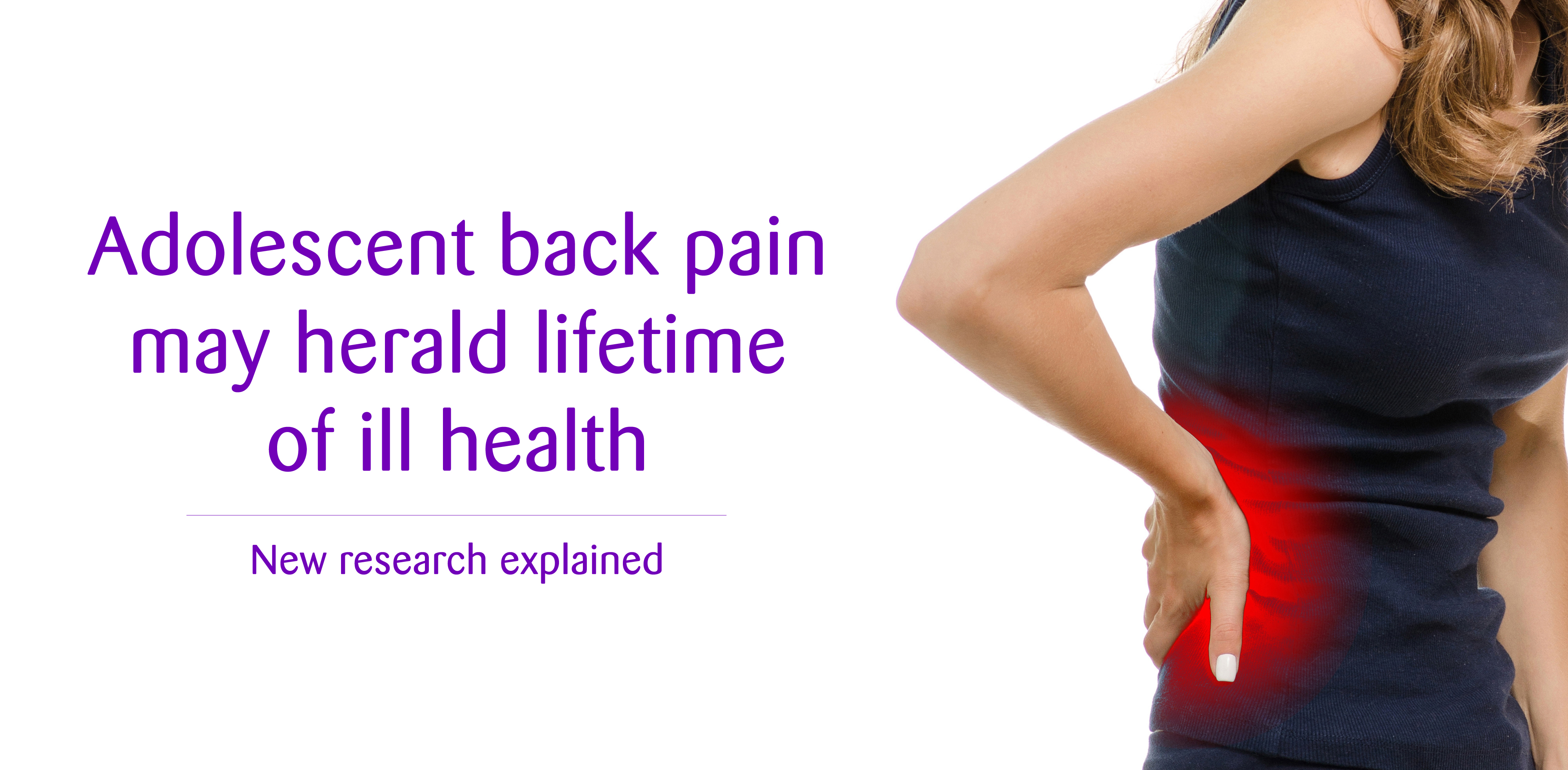
According to new research[1]adolescent back pain may predict poor overall health, and risk of chronic disease throughout life. The New Zealand Chiropractors’ Association (NZCA) is concerned that chiropractic care is an underused option in the management of back pain and spinal health among New Zealand teenagers, and believe it could minimise the use of unnecessary pharmaceutical usage[2]and help establish a better foundation for adult wellbeing.
Chiropractor and NZCA spokesperson Dr Cassandra Fairest explains: `This new study in the Journal of Public Health indicates that adolescents who experience back pain more frequently are also more likely to smoke cigarettes, drink alcohol, and report mental health conditions like anxiety and depression. But too few of them are seeking chiropractic care, which was recently cited in a major call to action by the Lancet as a drug free approach to the management of back pain’.
`The authors of this study point out that during adolescence, the prevalence of musculoskeletal pain in general, particularly back pain rises steeply. Although often dismissed as trivial and fleeting, adolescent back pain is responsible for substantial health care usage, school absence, and interferes with day-to-day activities in some children.’
Researchers used data collected from approximately 6500 teenagers. The proportion of participants reporting smoking, drinking, and missing school rose incrementally with increasing frequency of pain. For example, 14-15 year olds that experienced pain more than once a week were 2-3 times more likely to have drunk alcohol or smoked tobacco in the past month than those who rarely or never had pain.
Similarly, students that experienced back pain more than once a week were around twice as likely to have missed school duringthe previous school term. The trend with anxiety and depression was less clear, although there was a marked difference between the children who reported no pain, and those who reported frequent pain.
Dr Fairest says: `The researchers found that back pain and unhealthy behaviours not only occur together, but also persist into adulthood. In addition, the developing brain is susceptible to the negative influences of toxic substances, and use in early adolescence may increase the risk of substance abuse and mental health problems in later life.’
The Lancet, one of the world’s most prestigious medical publications, has said in a series of articles that healthcare system changes are crucial to changing behaviour and improving delivery of effective care for back pain. It recommends integrating and supporting health professionals from diverse disciplines to provide patients with consistent messages about mechanisms, causes, prognosis and natural history of low back pain, as well as the benefits of improved spinal health, physical activity and exercise. Chiropractic is ideally placed to play a pivotal role in this development.
Dr Fairest says: `We do have to ask ourselves why some New Zealanders are still being prescribed pain medication which may cause side effects when chiropractic care may be just as, or even more effective, and offer better long term outcomes? Chiropractors are uniquely placed to provide care that specifically focuses on the health of the spine and the relationship between the spine and the nervous system, both of which are clearly relevant to this populations presentations. It seems that there’s a disconnect between patient choices and evidence-based guidelines for low back pain based upon what is actually happening within our healthcare system. Too many GP’s are encouraging people to rely on medication and are only considering chiropractic care after pharmaceutical treatments have failed instead of making a referral to a chiropractor a first-line treatment option, as per the research.’
New Zealand’s chiropractors are taking the lead to inform, and inspire people to prevent pain and disability by educating the public to have a greater understanding of the relationship between their spine and nervous system, improving their posture, addressing and preventing spinal problems, and engaging in physical activity.
- [1]S J Kamper, Z A Michaleff, P Campbell, K M Dunn, T P Yamato, R K Hodder, J Wiggers, C M Williams. Back pain, mental health and substance use are associated in adolescents. Journal of Public Health, 2018; DOI: 10.1093/pubmed/fdy129
[2]Low back pain: a call for action Lancet Volume 391, No. 10137, p2384-2388, 9 June 2018https://www.thelancet.com/journals/lancet/article/PIIS0140-6736(18)30488-4/fulltext
